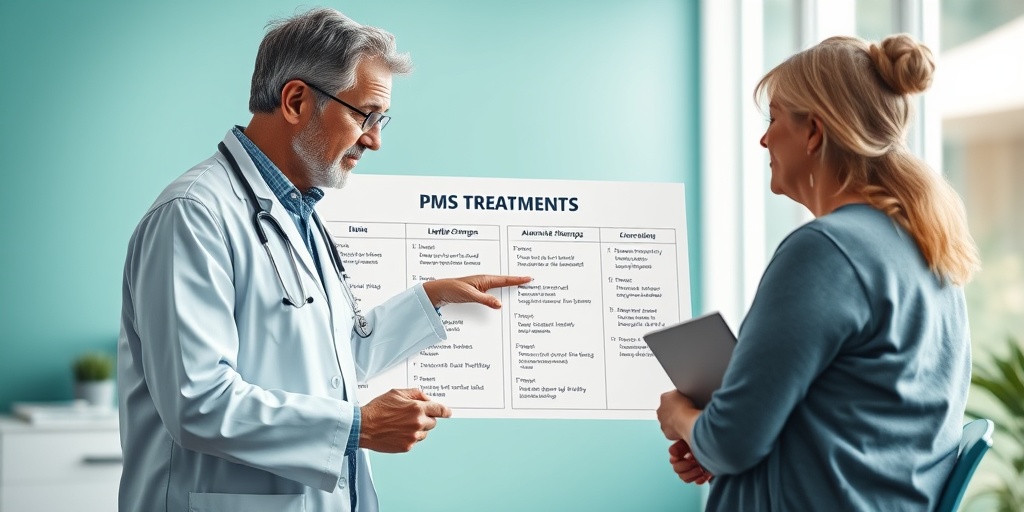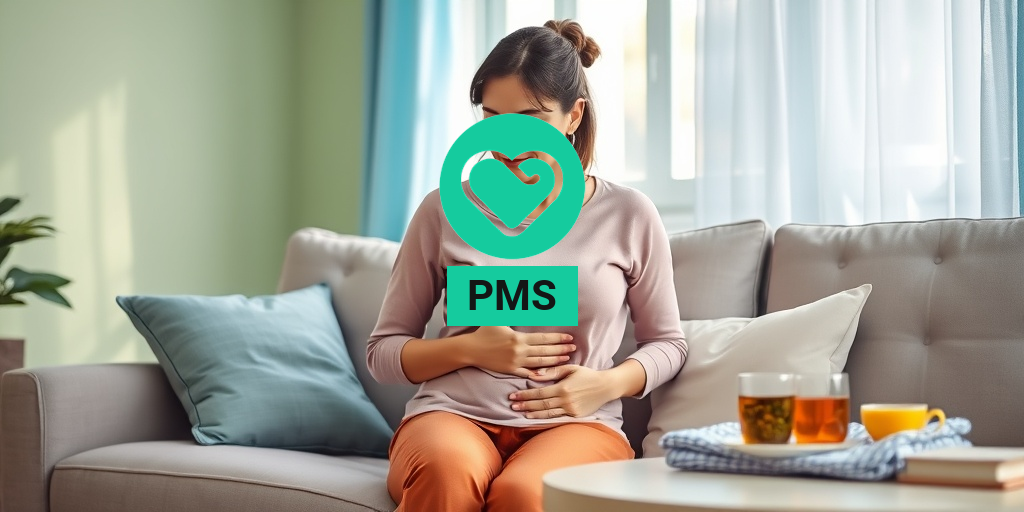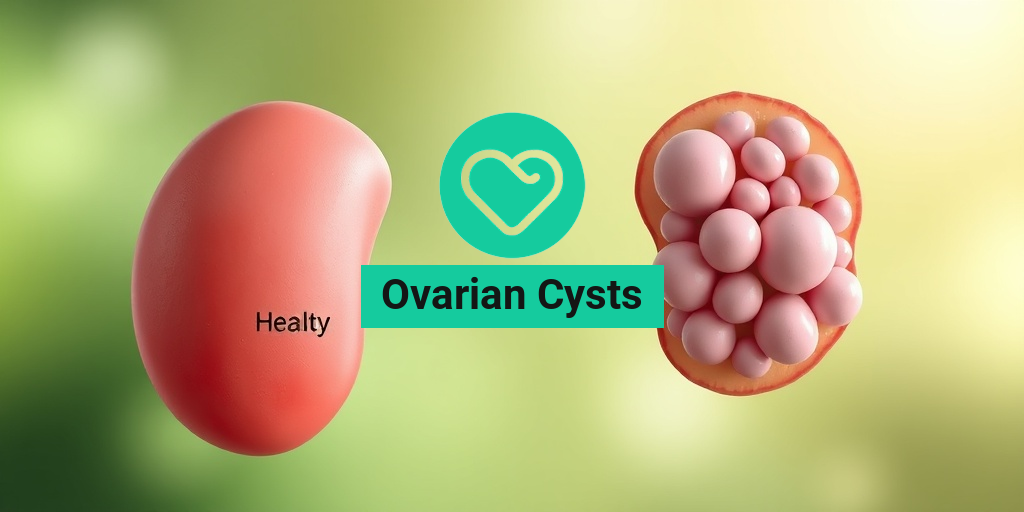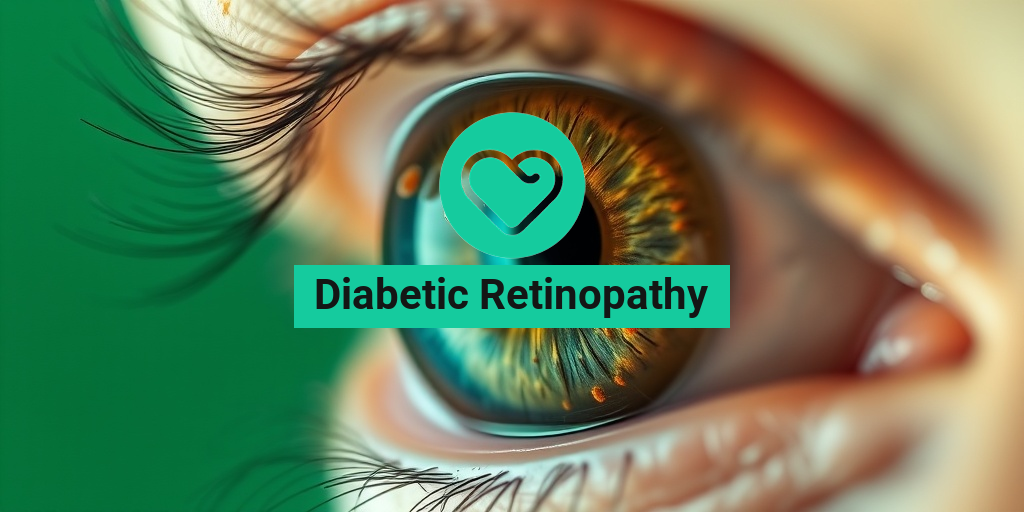What Is PMS?
PMS, or premenstrual syndrome, is a collection of physical and emotional symptoms that many women experience in the days leading up to their menstrual period. Understanding PMS is crucial for managing its effects and improving overall well-being. But what exactly does PMS mean?
The term “PMS” refers to a variety of symptoms that can occur during the luteal phase of the menstrual cycle, which is the time between ovulation and the start of menstruation. While the exact cause of PMS is not fully understood, it is believed to be linked to hormonal changes, particularly fluctuations in estrogen and progesterone levels. These hormonal shifts can affect neurotransmitters in the brain, leading to the emotional and physical symptoms associated with PMS.
For many women, PMS can be a challenging experience, impacting daily life, work, and relationships. It’s essential to recognize that PMS is not the same as pregnancy, although some symptoms may overlap. If you’re wondering about the differences between PMS vs pregnancy, it’s important to consult a healthcare professional for accurate diagnosis and guidance.
PMS Symptoms
The symptoms of PMS can vary widely from one woman to another, and they can range from mild to severe. Here are some common PMS symptoms that many women report:
- Emotional Symptoms: Mood swings, irritability, anxiety, and depression are common emotional symptoms of PMS. These can significantly affect a woman’s quality of life.
- Physical Symptoms: Many women experience physical discomfort, including PMS cramps, bloating, breast tenderness, and headaches.
- Behavioral Changes: Some women may notice changes in their sleep patterns, appetite, or energy levels during this time.
- Digestive Issues: Symptoms such as constipation or diarrhea can also occur, adding to the discomfort.
It’s important to note that while PMS is common, some women may experience a more severe form known as PMDD (premenstrual dysphoric disorder). PMDD can cause debilitating symptoms that interfere with daily life and may require medical intervention.
If you’re experiencing symptoms that you believe may be related to PMS, consider tracking your cycle and symptoms. This can help you identify patterns and discuss them with your healthcare provider. Resources like Yesil Health AI (yesilhealth.com) can provide evidence-based information and support for managing PMS effectively.
In conclusion, understanding what PMS is and recognizing its symptoms can empower women to take control of their health. Whether through lifestyle changes, dietary adjustments, or medical treatments, there are various ways to alleviate the discomfort associated with PMS. Remember, you are not alone in this journey, and support is available! 🌸

PMS Causes
PMS, or premenstrual syndrome, is a collection of physical and emotional symptoms that many women experience in the luteal phase of their menstrual cycle, typically occurring one to two weeks before menstruation. Understanding the causes of PMS can help in managing its symptoms effectively. Here are some of the primary factors that contribute to PMS:
Hormonal Changes
One of the most significant causes of PMS is the fluctuation of hormones, particularly estrogen and progesterone. During the luteal phase, levels of these hormones rise and fall, leading to various symptoms. For instance, a drop in estrogen can affect serotonin levels, a neurotransmitter that plays a crucial role in mood regulation. This hormonal imbalance can lead to mood swings, irritability, and anxiety, which are common PMS symptoms.
Neurotransmitter Imbalances
In addition to hormonal changes, imbalances in neurotransmitters such as serotonin and gamma-aminobutyric acid (GABA) can also contribute to PMS. Low serotonin levels are often linked to feelings of depression and anxiety, making it essential to maintain a healthy balance of these chemicals in the brain.
Genetic Factors
Research suggests that genetics may play a role in the severity of PMS symptoms. If your mother or sister experienced severe PMS, you might be more likely to experience it as well. Genetic predisposition can influence how your body reacts to hormonal changes, making some women more susceptible to PMS than others.
Diet and Lifestyle
Your diet and lifestyle choices can also impact the severity of PMS symptoms. A diet high in sugar, caffeine, and alcohol can exacerbate symptoms, while a balanced diet rich in whole foods, fruits, and vegetables can help alleviate them. Regular exercise is also beneficial, as it can boost mood and reduce stress levels.
Stress and Mental Health
Stress is another significant factor that can worsen PMS symptoms. High-stress levels can lead to increased anxiety and irritability, making it essential to find effective stress management techniques. Practices such as yoga, meditation, and deep-breathing exercises can help reduce stress and improve overall well-being.
PMS Risk Factors
While PMS can affect any woman of reproductive age, certain risk factors can increase the likelihood of experiencing severe symptoms. Understanding these risk factors can help in identifying those who may need additional support or treatment. Here are some common PMS risk factors:
Age
PMS symptoms often become more pronounced in women in their 30s and 40s. As women approach perimenopause, hormonal fluctuations can intensify, leading to more severe PMS symptoms. Younger women may experience milder symptoms, but this can vary widely from person to person.
Family History
If you have a family history of PMS or related conditions such as PMDD (premenstrual dysphoric disorder), you may be at a higher risk of experiencing PMS. Genetic factors can influence how your body responds to hormonal changes, making it essential to consider your family’s health history.
Previous Mental Health Issues
Women with a history of mental health issues, such as depression or anxiety, are more likely to experience severe PMS symptoms. The interplay between hormonal changes and mental health can create a cycle that exacerbates both conditions, making it crucial to seek help if you have a history of mental health challenges.
Obesity
Research indicates that obesity can increase the risk of PMS. Excess body fat can lead to hormonal imbalances, which may worsen PMS symptoms. Maintaining a healthy weight through diet and exercise can help mitigate these risks.
Smoking and Alcohol Use
Smoking and excessive alcohol consumption have been linked to increased PMS symptoms. Both substances can affect hormone levels and overall health, making it essential to limit their use for better management of PMS.
In conclusion, understanding the causes and risk factors of PMS can empower women to take control of their health. By recognizing these elements, individuals can make informed choices about lifestyle changes, seek appropriate treatment, and ultimately improve their quality of life during the menstrual cycle. 🌸

PMS Diagnosis
Premenstrual Syndrome, commonly known as PMS, affects a significant number of women during their reproductive years. Understanding how PMS is diagnosed is crucial for effective management and treatment. Let’s explore the diagnostic process for PMS.
Understanding PMS Symptoms
Before a diagnosis can be made, it’s essential to recognize the symptoms of PMS. These can vary widely among individuals but typically include:
- Emotional Symptoms: Mood swings, irritability, anxiety, and depression.
- Physical Symptoms: Bloating, breast tenderness, headaches, and PMS cramps.
- Behavioral Symptoms: Changes in sleep patterns, appetite fluctuations, and difficulty concentrating.
To diagnose PMS, healthcare providers often rely on a detailed history of symptoms. Keeping a symptom diary can be incredibly helpful. This diary should track:
- The timing of symptoms in relation to the menstrual cycle.
- The severity of symptoms.
- Any lifestyle factors that may influence symptoms.
Medical Evaluation
During a medical evaluation, your healthcare provider may ask about your menstrual history and any other health conditions. They may also conduct a physical examination and, if necessary, order blood tests to rule out other conditions that could mimic PMS symptoms, such as thyroid disorders or hormonal imbalances.
In some cases, healthcare providers may use diagnostic criteria from the Diagnostic and Statistical Manual of Mental Disorders (DSM-5) to assess for more severe forms of PMS, such as Premenstrual Dysphoric Disorder (PMDD). PMDD is characterized by more intense emotional and physical symptoms that can significantly impact daily life.
PMS Treatment Options
Once diagnosed, there are various treatment options for PMS that can help alleviate symptoms and improve quality of life. Treatment plans are often tailored to the individual, depending on the severity of symptoms and personal preferences.
Lifestyle Modifications
Many women find relief through lifestyle changes. Here are some effective strategies:
- Dietary Changes: Incorporating a balanced diet rich in fruits, vegetables, whole grains, and lean proteins can help. Reducing caffeine, sugar, and salt intake may also alleviate symptoms.
- Regular Exercise: Engaging in regular physical activity can boost mood and reduce bloating and cramps. Aim for at least 30 minutes of moderate exercise most days of the week.
- Stress Management: Techniques such as yoga, meditation, and deep-breathing exercises can help manage stress and improve emotional well-being.
Medications
If lifestyle changes are insufficient, various medications may be prescribed:
- Over-the-Counter Pain Relievers: Nonsteroidal anti-inflammatory drugs (NSAIDs) like ibuprofen can help relieve PMS cramps and other physical symptoms.
- Hormonal Treatments: Birth control pills or hormonal therapy can regulate hormones and reduce PMS symptoms.
- Antidepressants: For those experiencing severe emotional symptoms, selective serotonin reuptake inhibitors (SSRIs) may be effective.
Alternative Therapies
Some women explore alternative therapies to manage their PMS symptoms. These may include:
- Herbal Supplements: Some studies suggest that supplements like chasteberry and evening primrose oil may help alleviate symptoms.
- Acupuncture: This traditional Chinese medicine technique may help reduce pain and improve emotional well-being.
- Mind-Body Techniques: Practices such as mindfulness and cognitive behavioral therapy (CBT) can be beneficial for managing emotional symptoms.
In conclusion, understanding the diagnosis and treatment options for PMS is essential for managing this common condition effectively. By working closely with healthcare providers and exploring various treatment avenues, women can find relief and improve their overall quality of life. 🌸

PMS Lifestyle Changes
Premenstrual Syndrome (PMS) affects many individuals, causing a range of symptoms that can disrupt daily life. Making certain lifestyle changes can significantly alleviate these symptoms and improve overall well-being. Here are some effective lifestyle changes to consider:
1. Nutrition and Diet
What you eat can have a profound impact on your PMS symptoms. Incorporating a balanced diet rich in whole foods can help manage symptoms effectively. Here are some dietary tips:
- Increase Fruits and Vegetables: Aim for a variety of colorful fruits and vegetables. They are packed with vitamins, minerals, and antioxidants that can help reduce inflammation.
- Limit Caffeine and Sugar: High caffeine and sugar intake can exacerbate mood swings and irritability. Try to reduce your consumption of coffee, soda, and sugary snacks.
- Stay Hydrated: Drinking plenty of water can help reduce bloating and improve mood. Aim for at least 8 glasses a day!
- Include Whole Grains: Foods like brown rice, quinoa, and whole-grain bread can help stabilize blood sugar levels, which may alleviate some PMS symptoms.
2. Regular Exercise
Physical activity is a powerful tool for managing PMS. Regular exercise can help reduce stress, improve mood, and alleviate cramps. Here are some exercise recommendations:
- Cardiovascular Activities: Engage in activities like walking, jogging, or cycling for at least 30 minutes most days of the week. This can help release endorphins, which are natural mood lifters.
- Yoga and Stretching: Incorporating yoga or stretching exercises can help relieve tension and cramps. Poses like Child’s Pose and Cat-Cow can be particularly beneficial.
- Strength Training: Building muscle can improve your metabolism and help with weight management, which may ease PMS symptoms.
3. Sleep Hygiene
Quality sleep is crucial for managing PMS. Poor sleep can worsen symptoms like irritability and fatigue. Here are some tips for better sleep:
- Establish a Sleep Routine: Go to bed and wake up at the same time every day to regulate your body’s internal clock.
- Create a Relaxing Environment: Make your bedroom a peaceful sanctuary. Consider using blackout curtains, white noise machines, or essential oils to promote relaxation.
- Avoid Screens Before Bed: Limit exposure to screens at least an hour before bedtime to improve sleep quality.
4. Stress Management
Stress can exacerbate PMS symptoms, so finding effective ways to manage stress is essential. Here are some strategies:
- Meditation and Mindfulness: Practicing mindfulness or meditation can help calm your mind and reduce anxiety.
- Deep Breathing Exercises: Simple deep breathing techniques can help lower stress levels and promote relaxation.
- Engage in Hobbies: Spend time doing activities you enjoy, whether it’s reading, painting, or gardening. This can provide a much-needed distraction and boost your mood.
PMS Coping Strategies
In addition to lifestyle changes, having effective coping strategies can help you manage PMS symptoms more effectively. Here are some practical approaches:
1. Track Your Symptoms
Keeping a PMS diary can help you identify patterns and triggers related to your symptoms. Note down:
- Physical Symptoms: Track symptoms like cramps, bloating, and headaches.
- Emotional Symptoms: Record mood changes, irritability, and anxiety levels.
- Menstrual Cycle: Keep track of your cycle to anticipate when symptoms may occur.
2. Over-the-Counter Remedies
For some, over-the-counter medications can provide relief from PMS symptoms. Consider:
- NSAIDs: Non-steroidal anti-inflammatory drugs like ibuprofen can help alleviate cramps and reduce inflammation.
- Vitamins and Supplements: Some studies suggest that calcium, magnesium, and vitamin B6 may help reduce PMS symptoms. Consult with a healthcare provider before starting any new supplements.
3. Seek Support
Don’t hesitate to reach out for support. Talking to friends, family, or a therapist can provide emotional relief. Consider joining a support group where you can share experiences and coping strategies with others who understand what you’re going through.
4. Professional Help
If your PMS symptoms are severe or significantly impact your daily life, it may be time to consult a healthcare professional. They can provide guidance on treatment options, including:
- Hormonal Treatments: Birth control pills or hormonal therapies may help regulate hormones and alleviate symptoms.
- Antidepressants: In some cases, antidepressants may be prescribed to help manage severe mood swings and depression associated with PMS.
By implementing these lifestyle changes and coping strategies, you can take control of your PMS symptoms and improve your quality of life. Remember, you are not alone in this journey! 🌼

Frequently Asked Questions about PMS
What is PMS?
PMS, or premenstrual syndrome, refers to a variety of physical and emotional symptoms that many individuals experience in the luteal phase of their menstrual cycle. These symptoms typically occur one to two weeks before menstruation and can vary in intensity.
What are the common symptoms of PMS?
- Emotional symptoms: Mood swings, irritability, anxiety, and depression.
- Physical symptoms: Bloating, breast tenderness, headaches, and cramps.
- Behavioral symptoms: Changes in sleep patterns and appetite.
How does PMS differ from PMDD?
PMDD, or premenstrual dysphoric disorder, is a more severe form of PMS. While PMS can cause discomfort, PMDD significantly impacts daily functioning and may require medical intervention. Symptoms of PMDD include severe mood swings, depression, and anxiety that can disrupt daily life.
Can PMS symptoms be mistaken for pregnancy?
Yes, some symptoms of PMS can mimic those of early pregnancy, such as breast tenderness and fatigue. However, PMS typically resolves with the onset of menstruation, while pregnancy symptoms persist. If there is uncertainty, a pregnancy test can provide clarity.
What is the full form of PMS?
The full form of PMS is premenstrual syndrome. It encompasses a range of symptoms that occur before menstruation.
How can I manage PMS symptoms?
- Dietary changes: Eating a balanced diet rich in fruits, vegetables, and whole grains can help.
- Exercise: Regular physical activity can alleviate symptoms.
- Stress management: Techniques such as yoga, meditation, and deep breathing can be beneficial.
- Medications: Over-the-counter pain relievers or hormonal treatments may be recommended by a healthcare provider.
Is there a PMS portal or online resource for support?
Yes, many health organizations provide online resources and portals where individuals can find information about PMS, connect with support groups, and access tools for symptom tracking.
What does PMS mean in different contexts?
While PMS primarily refers to premenstrual syndrome in a health context, it can also stand for various terms in different fields, such as project management systems or property management systems. Always consider the context in which the term is used.
Are there specific colors associated with PMS?
In design and printing, PMS colors refer to the Pantone Matching System, which is used to ensure color consistency. This is unrelated to the health context of PMS.
When should I see a doctor about my PMS symptoms?
If your PMS symptoms are severe, interfere with daily activities, or do not improve with lifestyle changes, it is advisable to consult a healthcare professional for further evaluation and management options.




